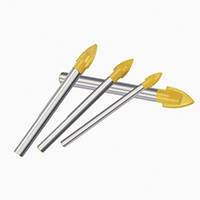loading...
- No. 9, Xingyuan South Street, Dongwaihuan Road, Zaoqiang County, Hengshui, Hebei, China
- admin@zjcomposites.com
- +86 15097380338
- Welcome to visit our website!
Durable FRP Roofing Solutions for Reinforced Deck Applications
Understanding FRP Roof Decks A Comprehensive Overview
In today’s construction landscape, the materials utilized for building roofs play a critical role in both structural integrity and energy efficiency. One emerging solution that has gained traction is the Fiber Reinforced Polymer (FRP) roof deck. This innovative material is becoming increasingly popular due to its various advantages over traditional roofing systems. In this article, we will explore what FRP roof decks are, their benefits, applications, and considerations for their use in modern architecture.
What is FRP?
Fiber Reinforced Polymer (FRP) is a composite material consisting of a polymer matrix reinforced with fibers—commonly glass, carbon, or aramid. This combination results in a lightweight, strong, and corrosion-resistant material that has various applications in the construction industry, including in the fabrication of roof decks.
Advantages of FRP Roof Decks
1. Lightweight and High Strength One of the most significant advantages of FRP roof decks is their lightweight nature. Compared to traditional materials such as concrete or steel, FRP panels significantly reduce the overall weight of the structure, which can decrease the required load-bearing capacity of supporting beams and columns. This reduction can lead to savings in foundational costs and materials.
2. Corrosion Resistance Unlike metal roofing materials that can rust and corrode over time, FRP is highly resistant to environmental elements such as moisture, chemicals, and UV radiation. This property ensures a longer lifespan for the roof deck, making it an excellent choice for industrial applications or regions with harsh weather conditions.
3. Thermal Insulation FRP roof decks provide superior thermal insulation, which can lead to significant energy savings in heating and cooling costs. The use of insulating materials in conjunction with FRP can help maintain stable indoor temperatures, contributing to overall energy efficiency.
4. Design Flexibility The flexibility of FRP materials allows architects and designers to explore innovative shapes and designs, providing a unique aesthetic that can enhance the visual appeal of buildings. This adaptability makes FRP roof decks suitable for a variety of architectural styles.
5. Quick Installation Because of their lightweight nature, FRP roof decks are easier and quicker to install than traditional materials. This advantage can result in reduced labor costs and shorter construction timelines, which are valuable for project completion dates.
frp roof deck

Applications of FRP Roof Decks
FRP roof decks are commonly used in various applications, including
- Commercial Buildings Many shopping centers, warehouses, and office complexes utilize FRP for their roofing solutions, benefitting from their durability and cost-effectiveness. - Industrial Facilities The chemical resistance of FRP makes it ideal for factories and plants that deal with corrosive materials. - Infrastructure They are increasingly being adopted in constructing bridges and tunnels, where weight and strength are critical factors. - Residential Projects With the growing trend towards sustainable and energy-efficient homes, FRP roof decks are making their way into residential construction as well.
Considerations for Use
While FRP roof decks offer many advantages, there are some considerations that builders and designers should keep in mind
1. Cost Although the installation costs can be competitive, the initial investment for FRP materials may be higher than for traditional roofing options. However, the long-term savings from maintenance and energy use can offset this initial expenditure.
2. Fire Resistance Depending on the type of polymer used, FRP materials may have variable fire resistance properties. It’s essential to consult local building codes and fire safety regulations when selecting FRP for roof applications.
3. Structural Engineering Given the unique properties of FRP, it’s crucial to engage structural engineers familiar with designing and implementing FRP systems to ensure the building meets all safety standards.
Conclusion
FRP roof decks represent a significant advancement in roofing technology. With their lightweight nature, resistance to corrosion, and impressive thermal properties, they offer a compelling alternative for a wide range of construction applications. As the building industry continues to evolve, embracing more sustainable and efficient materials, FRP roof decks are well-positioned to lead the way in modern architectural design. As always, careful consideration of their properties and compliance with local construction standards will ensure that these innovative materials fulfill their potential in creating resilient and efficient structures.
-
The Rise of FRP Profiles: Strong, Lightweight, and Built to LastNewsJul.14,2025
-
SMC Panel Tanks: A Modern Water Storage Solution for All EnvironmentsNewsJul.14,2025
-
GRP Grating: A Modern Solution for Safe and Durable Access SystemsNewsJul.14,2025
-
Galvanized Steel Water Tanks: Durable, Reliable, and Ready for UseNewsJul.14,2025
-
FRP Mini Mesh Grating: The Safer, Smarter Flooring SolutionNewsJul.14,2025
-
Exploring FRP Vessels: Durable Solutions for Modern Fluid HandlingNewsJul.14,2025
-
GRP Structures: The Future of Lightweight, High-Performance EngineeringNewsJun.20,2025
